
When the airports closed in April because of the coronavirus pandemic, we found out that the world was already at our doorstep. We were two travelers who found seven wonders in our home country, Germany.
Travel was almost impossible, and for a good reason: Closing the airports was a necessary step to stop the pandemic from spreading even more. But the travel bug bit us, and it bit hard.
“Us”? I’m Rob, age 27, an explorer, archaeologist and writer, and my amazing girlfriend Toni, 27, Egyptologist, author and also an archaeologist. Together we have the travel blog “Take Your Shoes Off.”
We live in Germany, where the lockdown was pretty serious. All shops except for supermarkets and pharmacies closed, and everyone was required to wear a mask and keep a distance from other people. The thought of traveling was but a dream. In time, though, the lockdown was a bit toned down and this is where we saw an opportunity to take an unexpected trip through our home country.
Read More: Germany Travel Guide
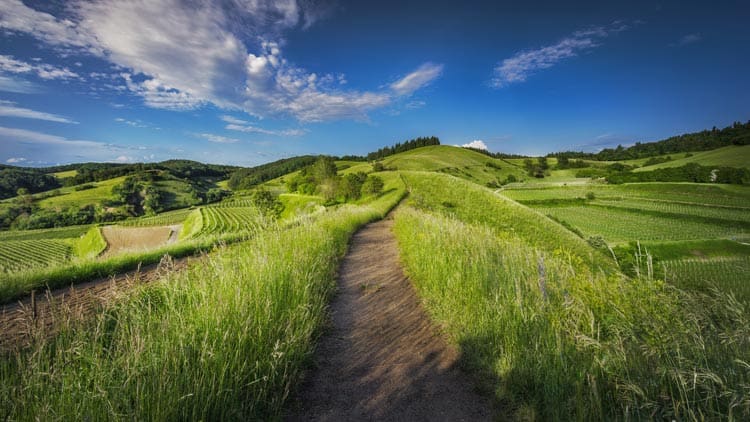
In early January, we had returned from Japan after the successful search for three secret shrines, and we already had made plans for our next trips. Cambodia was the country we wanted to see next, but Asia shut down pretty early on so we had to change our plans. Then, those other plans were halted when all of the airports closed due to COVID-19.
So, there we were, eager to discover new countries and their cultures, but nowhere to go. The only option we had left was to turn our view inward and take a trip through our home country. We had taken vacations in Germany as kids, but as we grew older and the many places on earth became much more accessible, we didn’t really think about taking a trip in home territory.
We wondered: How do you travel through your home country? Haven’t you already seen everything it has to offer? Is it even worth it?
Our answers were simple: How? Cheap, sleep in the car, visit relatives and just one or maybe two hotels. Haven’t we seen everything already? I had to do some research to find the hidden gems of our home, and there were some pretty amazing gems.
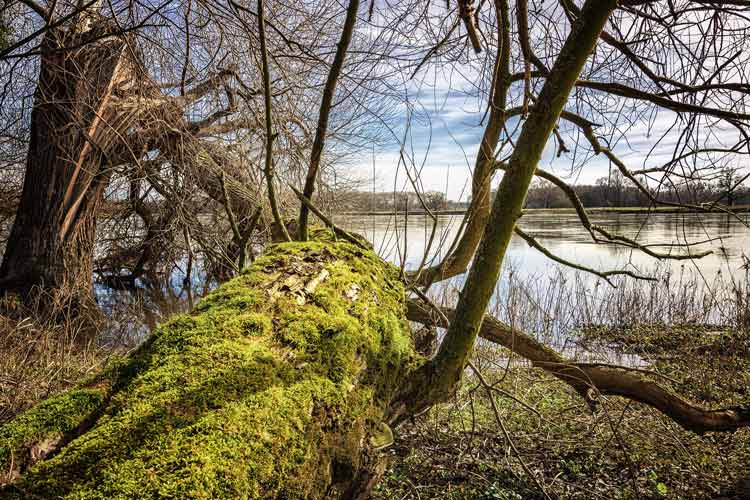
The Amazon River of Germany
Our first stop was the Amazon River of Germany. That’s the nickname of Taubergießen, a place made by one of the many side arms of the river Rhine and located near the town of Rust, which is famous for the theme park “Europa Park.” Because of the more relaxed flowing water and the nice climate at the German-French border, the vegetation is almost jungle-like.
To discover this beautiful place of nature we choose to take canoes, which allowed up to be up close to the scenery. While we paddled through the river as the thick vegetation moved past us, we felt like we were on a river adventure in South America.
After our canoeing experience, we headed to the first place we wanted to stay the night – a parking place near a castle. We made a bed in the front seats of the car with a camping mattress, sleeping bags, pillows and a blanket. The night in the car was surprisingly comfortable.
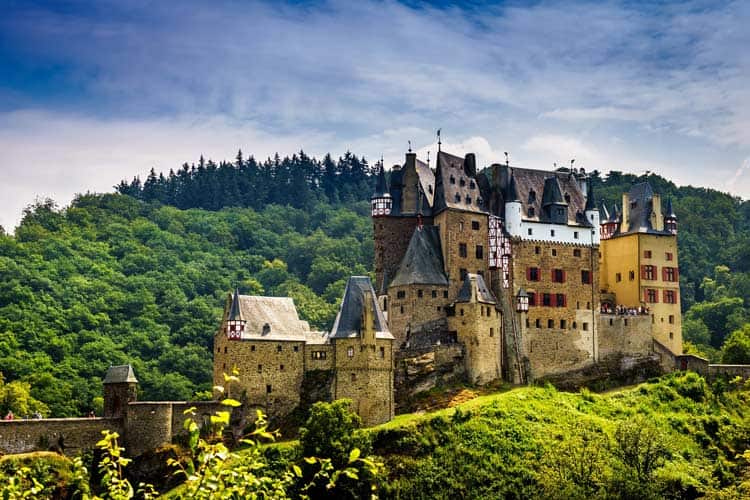
Eltz Castle
The second stop was the Eltz Castle near Koblenz. You might recognize this medieval castle in the hills along the river Moselle from a gazillion Instagram posts. The castle, with its long bridge leading to the main gate, is beautiful not only on the outside but also on the inside and it’s rich in history.
One interesting fact about the castle: It was the only castle that Napoleon didn’t overtake when he invaded Germany because he simply overlooked it. That’s because the Eltz Castle was built in a valley and not on a mountain top, like many other castles.
We also enjoyed the hike to the castle, with amazing scenery and near the river Moselle. We spent the night in the town of Winningen next to the Moselle, whose region is famous for its wine. To add a bit of luxury to our trip, we booked an apartment in a castle through Airbnb. Sleeping in a castle made us feel like lord and lady.
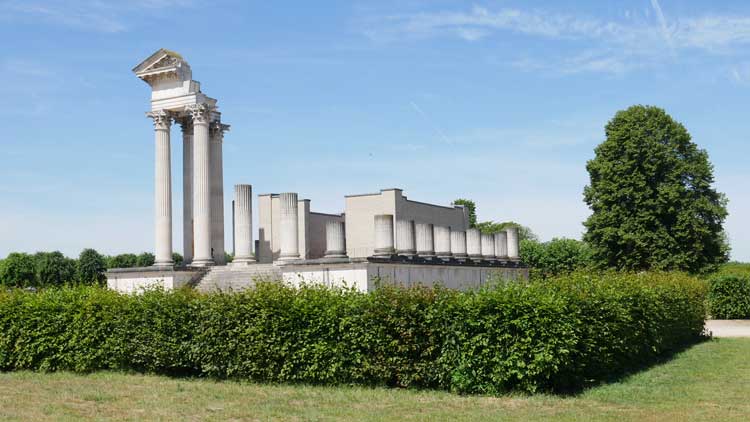
Xanten
Our third stop was at a one-time imperial Roman city. The city of Xanten, in the state of North Rhine-Westphalia, is not only the place of the old German hero saga of Siegfried and the Dragon but is also a former city of the Roman empire. The archaeological park of Xanten is filled with reconstructions of temples and foundations of bathhouses, hostels, walls and towers.
When you walk through the park you can truly imagine how the people lived then. Due to the pandemic, many buildings in the park were closed, but there was no entrance fee and the museum was still open, in which there was much to see.
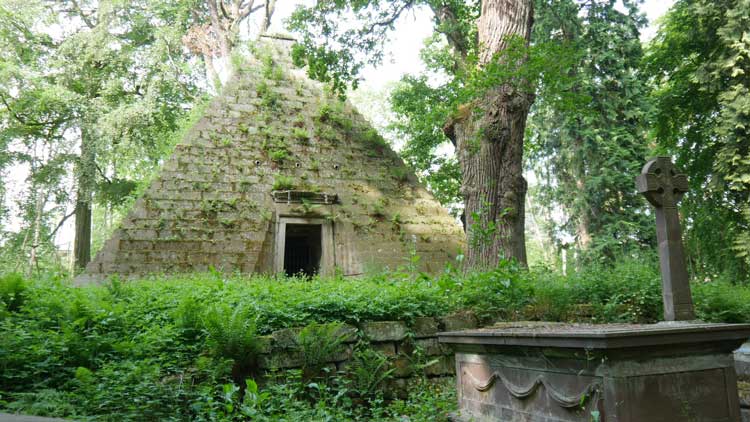
Laves Kulturpfad Hiking Path
At our fourth stop, we saw a pyramid and a Greek temple. In 1839, Count Ernst zu Münster died and a mausoleum was built to keep his body and the bodies of his family. The architect decided that a pyramid was a fitting last resting place for the culture and art-loving count.
In 1988, the town of Holle decided that the pyramid, together with a Greek temple the count had built and some other noticeable buildings of the area, should be connected by the “Laves Kulturpfad,” a hiking path that starts in the village of Derneburg. The village is about 50 km (31 m) south of Hanover.
I was mesmerized when I had found a picture of the pyramid on the internet while doing research for our trip in April. In June we were at the “Laves Kulturpfad” and were truly fascinated by the small monuments you could see there.
When the overgrown pyramid came into view my jaw dropped and I spent at least an hour taking pictures. The Greek temple was just a shadow of its former self, but that gave the building a cool lost place vibe.
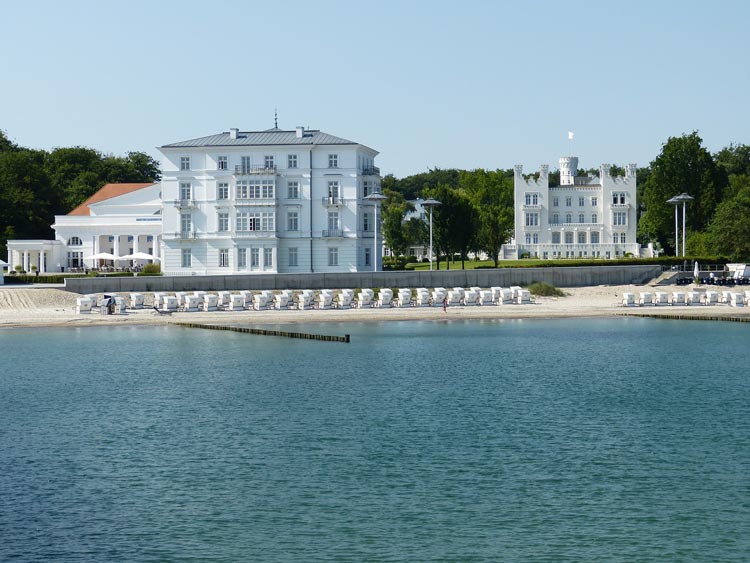
Baltic Sea
Our fifth stop brought us to the eastern sea. If you do not see the ocean every day it is a really unique view. We drove to a little parking place right next to a massive five-star hotel, the Grand Hotel Heiligendamm.
We got our car ready for the night and then walked the 2 minutes to the beach for a sunset stroll. We saw an otter playing in the waves and saw an old abandoned mansion with an amazing view of the ocean. At the pier, we saw a fisherman preparing his fishing rods, just like in an old fisher town.
The night we spent in the car was nice and quiet, only the waves of the ocean made a sound, but the next morning was rather eventful.
While my morning consisted of a sunrise walk on the beach, Toni had a run-in with a wild hog in the woods while she was answering nature’s call. I was already back at the car when I heard a dog barking. Then a pale, shaking Toni knocked on the car’s window. Apparently, the barking dog chased away the wild hog.
As soon as Toni was calm again, we headed out for breakfast and then to Germany’s biggest island, Rügen. We had booked a hotel there because we truly needed a shower. After the island of Rügen, we drove farther down south to Schwerin, where we visited some relatives who showed us around town before we headed to our next stop.
Read More: Islands of Germany
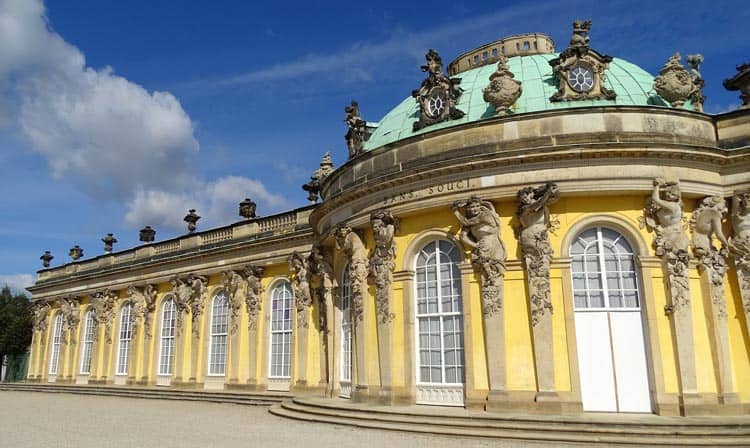
Sanssouci Castle
A French castle in Germany was our sixth stop. The Sanssouci Castle in Potsdam copied the style of the French castles of its time in the mid-1700s.
Frederick the Great, king of Prussia, built the castle as his summer palace. Nicknamed “The old Fritz,” he was rather flamboyant, evidence of which you can see to this day in his castle. Art is the dominant theme in the castle. The king always tried to impress his artist friends whom he invited to stay at his castle.
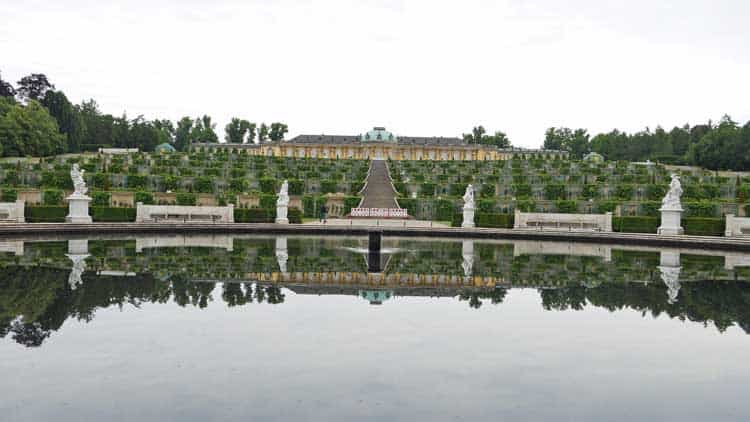
In addition to the castle and its art, the park surrounding the castle is also stunning. It features a Chinese-inspired house, a Roman bath, fountains and castle art galleries.
When we were leaving Potsdam, we had a bit of the blues because our next stop would be the last of our trip.
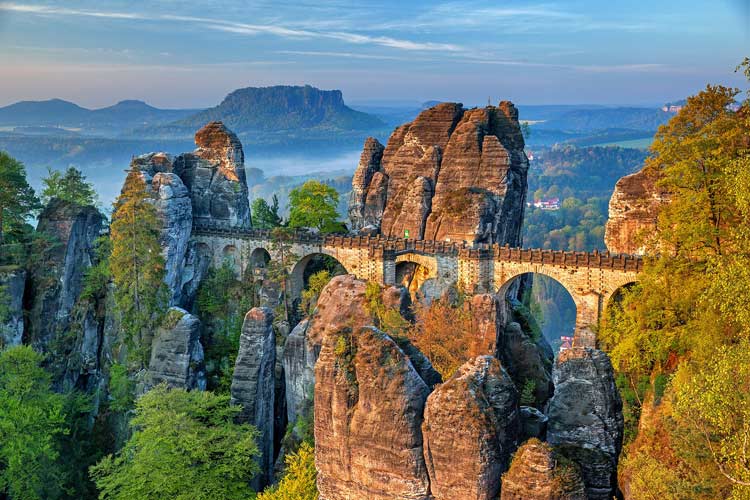
Saxony Switzerland Region
On our seventh and last stop, we saw a medieval monument build into a cliffside. The Bastei, in Germany’s Saxony Switzerland region of Saxony, is the remains of a massive fort built high upon the cliffs.
It is a breathtaking view in itself but when you stand on top of the ruins and look upon the vast region of the national park before you, you will get the feeling of being a bit smaller in this world. When you walk through the ruins of this fort you can clearly see how much effort it must have taken to build it. The sandstone bridge that connects some of the rock formations is the highlight of the whole area.
I’m not going to lie, when I crossed that bridge, I got some serious Lord of the Ring vibes despite the annoying Instagram model taking a gazillion pictures of herself right in the center of the bridge. At the highest top of the fort, we saw all of the lands we had just crossed for about two weeks now. That was the point when I started to reflect.
We started our trip with almost no expectations and maybe that’s the reason why we were so blown away by it. Who would have thought that without crossing any border we would be able to see Roman cities, Greek temples, pyramids, French castles, rivers like the Amazon, the ocean and medieval monuments in Germany?
We learned that the world is quite literally upon our doorstep and that we do not always have to travel to the end of the world to experience an adventure. The world is maybe still closed at the time you are reading this but this does not mean you are unable to travel. All it takes is a new point of view to adjust to new circumstances.
Fun Facts From Our Trip Around Germany:
- 2,987.6 km (1,856.4 miles) by car
- 87 km (54 miles) by foot
- 4.7 km (2.9 miles) by canoe
- 112 toilet breaks
- 1 unsuccessful campfire
- 1 successful campfire
- 10 grilled sausages
- 13 sandwiches
- 20.5 liters (5.4 gallons) of water
- 1 wombat-looking wild hog
- 7 castles
- 2 rivers
- 3 lakes
- 1 out of the 7 seas
- 2 temples
- 1 pyramid
- 1 Roman city
- 5 hiking parking places
- 10 cities
- 1 amazing trip
Author Bio: Rob Schmidt is an adventurer, traveler and story-teller. At 22, he almost died of a heart condition, which changed his life. He quit his 9-to-5 life and went out in the world to become an explorer with the words “what could possibly go wrong?” He traveled the world to collect stories and gathered a few cuts and bruises along the way. He undertakes expeditions to every corner of the world. His most famous was the Kumari-Caves expedition in 2016. He shares his stories in the blog “Take Your Shoes Off,” which he started with his girlfriend in 2020.
Website: https://tyso93.wordpress.com/ Instagram: https://www.instagram.com/whostherob/
Read More: Top 10 Things to Do in Germany or Travel Ideas from Germany
- Fiddle, Flutes & Pubs: A Musical Journey Through Northern Ireland & County Donegal - July 14, 2025
- Tokyo vs. Osaka: The Ultimate Face-Off for First-Time Visitors to Japan - July 14, 2025
- When Is the Best Time to Visit Iceland? Find Your Perfect Month for Budget, Weather, and Activities - July 14, 2025
